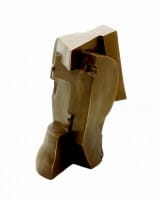Cubism
Cubism is an influential art movement that originated in the early 20th century. It is often considered one of the most transformative and radical art movements of the modern era, profoundly impacting the course of art history and paving the way for future avant-garde movements. Here are some key facts about Cubism:
- Origins and Founders: Cubism was founded by Pablo Picasso and Georges Braque in Paris, France, around 1907. The term "Cubism" was first used by the French critic Louis Vauxcelles in 1908. He described the landscape paintings of Braque as reducing everything "…to geometric outlines, to cubes."
- Two Phases: Cubism is typically divided into two phases: the Analytic phase (1907-1912) and the Synthetic phase (1912-1919). Analytic Cubism was marked by the use of monochromatic color schemes and complex, fragmented forms, while Synthetic Cubism was characterized by simpler shapes, brighter colors, and the introduction of mixed media and collage elements.
- Artistic Influence: Cubism marked a departure from the traditional techniques of perspective, modeling, and foreshortening. Instead, objects and figures were broken up into a multitude of small facets, presented from multiple points of view simultaneously.
- Impact on Other Art Movements: Cubism had a significant impact on many other 20th-century art movements, including Futurism, Suprematism, Constructivism, De Stijl, and even Dada and Surrealism. The abstract styles of the later 20th century, such as Abstract Expressionism, also owe a debt to the Cubists.
- Key Works: Some key Cubist works include Picasso's "Les Demoiselles d'Avignon" (1907), which prefigured the development of Cubism, and Braque's "Violin and Candlestick" (1910), a classic example of Analytic Cubism. Picasso's "Still Life with Chair Caning" (1912) is a notable work from the Synthetic Cubist period, recognized for its innovative use of collage.
- Later Developments: While Cubism as a distinct movement ended by the early 1920s, its influence continued throughout the century. Artists such as Fernand Léger, Robert Delaunay, and Juan Gris developed their styles based on Cubism, leading to related movements like Orphism and Purism.
- Cultural Impact: The principles of Cubism had a far-reaching impact, extending beyond the visual arts into literature, architecture, and music. The movement has been linked to Albert Einstein's theory of relativity and is considered reflective of the rapid changes and fragmentation of traditional society in the 20th century.
- Market Value: Works by the primary Cubist artists, Picasso and Braque, are highly valued in the art market today. For instance, Picasso's "Les femmes d'Alger (Version 'O')" (1955), although from a later period, sold at Christie's in 2015 for $179.4 million, setting a record for the most expensive painting ever sold at auction at that time.







